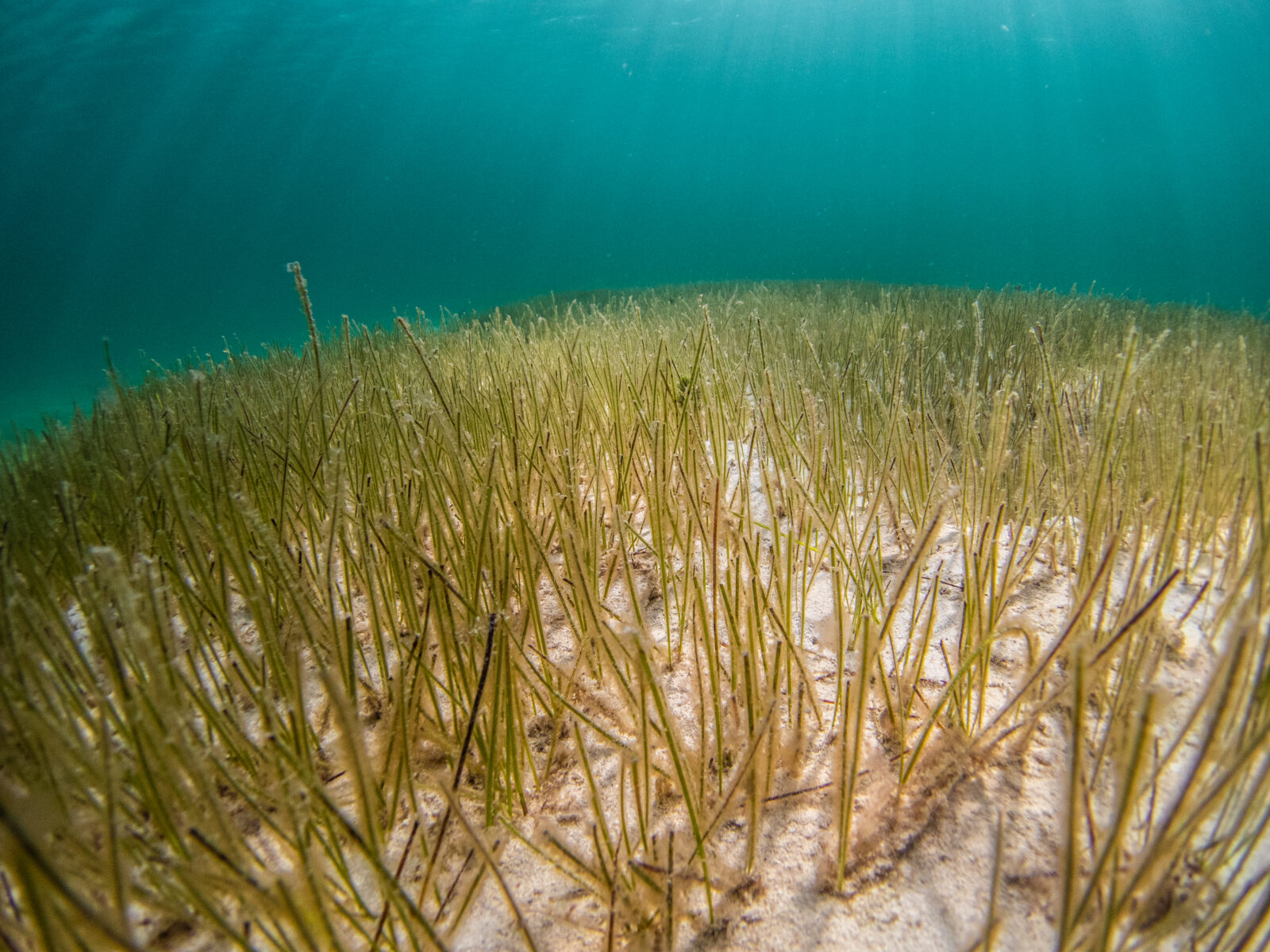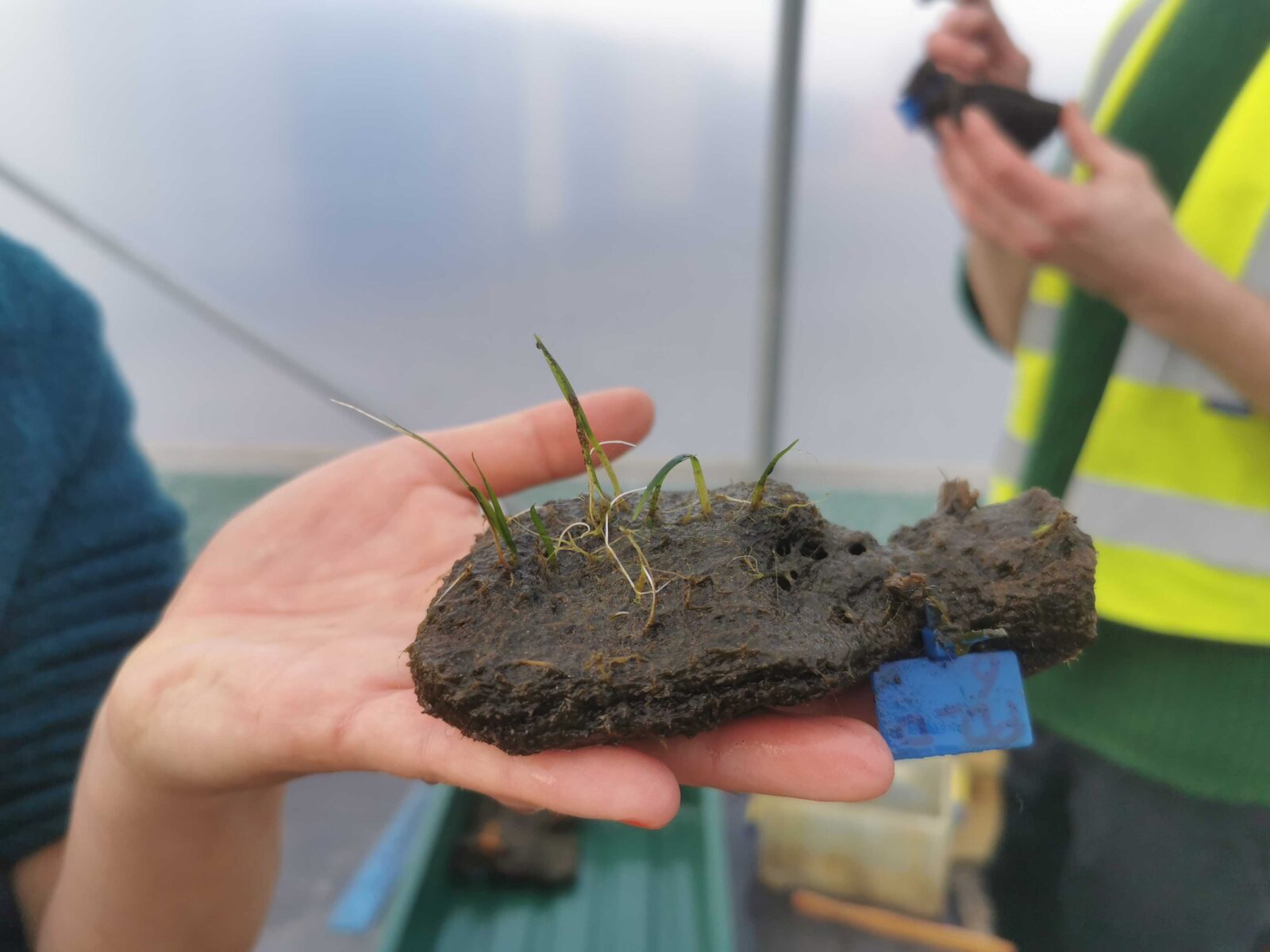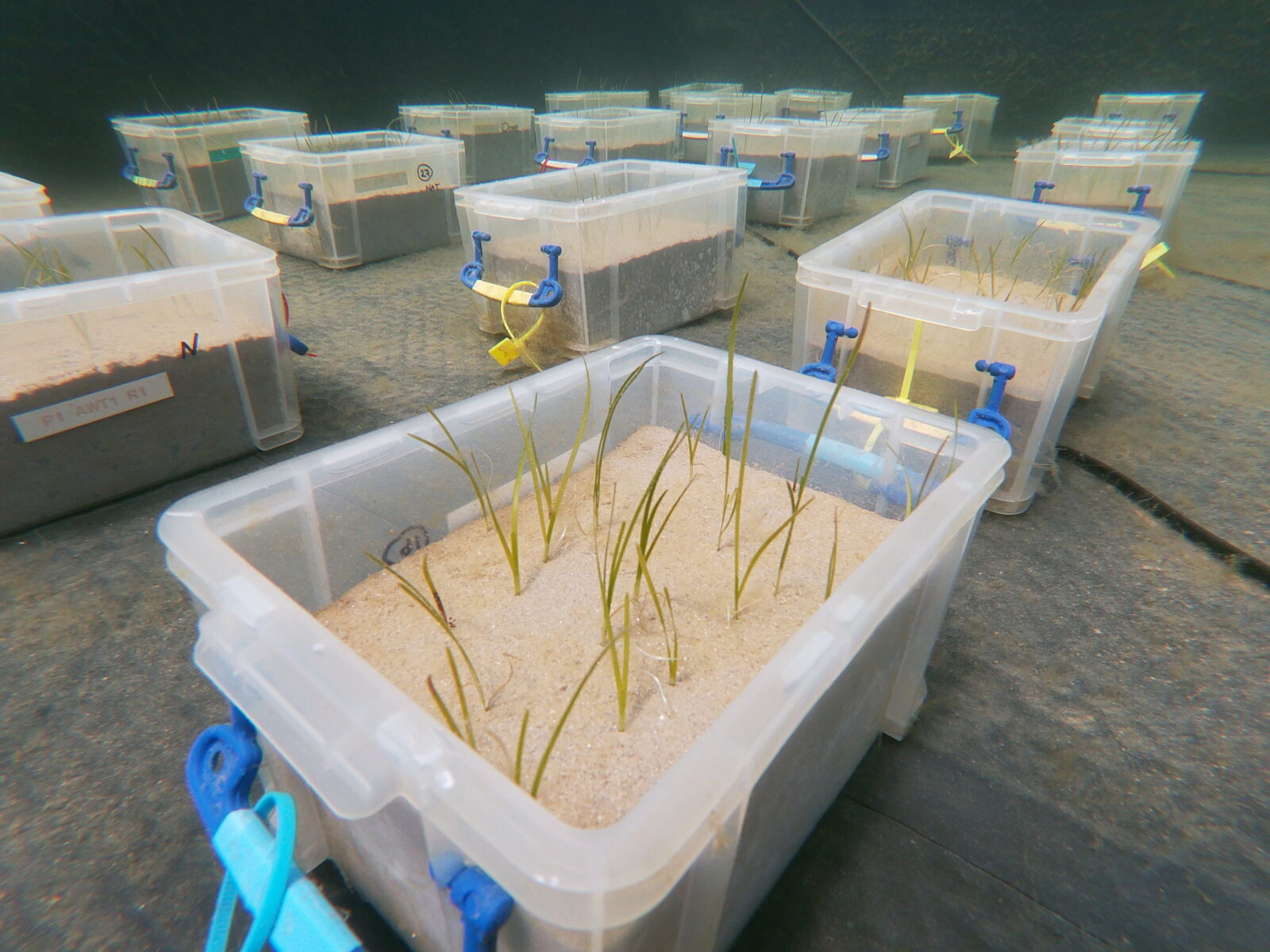Project Update: Restoration Forth | June 2024

June 27, 2024 Content Team Restoration Forth aims to restore seagrass meadows and native oysters into the Firth of Forth, to create a healthier coastline for people and nature. Find out more about the project here. Orkney seagrass trip Next month the seagrass team will be departing for their annual seed collection trip in Orkney. Following a productive planting season in March 2024, the team will be returning to Kirkwall to collect Zostera marina seeds that will be planted in March 2025. Restoration Forth employs a non-destructive method for collecting seagrass seeds, shoots are hand-picked by snorkellers and divers through a selective process to ensure donor meadows are not over picked. This year, Project Seagrass are working with Heriot-Watt University and local scallop divers to collect seeds from subtidal seagrass meadows. Prior to seed harvesting, the team conduct extensive surveys of the donor meadows to ensure that the harvesting of seeds will not cause a significant effect to the health or size of the meadows. The deployment of a dive team will increase the yield of seeds collected this year, by accessing subtidal parts of the meadow which are not usually accessible through snorkelling. Join us for snorkelling sessions at Finstown! Restoration Forth are organising seagrass snorkel sessions this July and August to showcase the rich diversity of marine life that live in these amazing habitats and to demonstrate how we collect seagrass seeds. Further details can be found here. Photo credit: Raymond Besant Photo credit: Raymond Besant Oyster Citizen Science We are very excited to announce that the new oyster citizen science activity booklet is now live! Our new booklet contains activities for everyone around the Firth of Forth to get involved in contributing to oyster restoration. You can find the activities and all the information on how to take part on the webpage here under ‘Help Restore the Firth of Forth’. The Restoration Forth team, with the help of volunteers, will be beach hopping around East Lothian, Edinburgh and Fife with the activity booklet next week. Please do pop by and say hello! We will be at Port Seton Links and Fisherrow Sands, Musselburgh, on Friday 28th June and Cramond Beach and Silver Sands, Aberdour, on Saturday 29th. Timings and more information about the events can be found here. Oyster Observer Guide Update Thank you so much to those of you who have completed and submitted an Oyster Observer Guide survey. This information will help inform which sites will be most suitable for oyster restoration work. We so far have surveys from the following locations: Fife: Kingsbarns, Ravenscraig Edinburgh: Cramond East Lothian: Seton Beach, Yellowcraig, Morrisons Haven, Belhaven Bay, Longniddry (Bents 1, 2 and 3) Fisherrow Sands and Musselburgh beach. If you have completed a survey but are still to submit your results, you can do so here. Likewise, if you would like to get involved, the Oyster Observer Guide and instructions on how to take part can be found here. Photo credit: Caitlin Godfrey Climate Resilience survey WWF want to learn more about the climate resilience impacts of their projects. They are running this very short survey to find out more about the impact Restoration Forth has had on you, and your thoughts about local community and climate resilience. It should only take about 5 minutes to complete, and you will be entered into a prize draw to win a £50 Scotland Loves Local gift card. Click here to start the survey (closes on the 8th July 2024). Goodbye 100 species The inspiring 100 Species exhibition project is now finished, after having been displayed at Heart of Newhaven to the Scottish Seabird Centre and, finally, the Scottish Fisheries Museum in Anstruther. Edinburgh Shoreline held a little thank-you party in the Anstruther Museum for all the Fife contributors on 7th June. During this the winning paintings from a local schools art competition, organised by the Museum and inspired by the 100 species exhibition, were displayed. A total of 480 children participated and, through their engagement, learned all about Restoration Forth, oysters and seagrass. The Newhaven Community Choir performed, included one song specially written as a homage to Restoration Forth. Look out for videos on the Edinburgh Shoreline YouTube channel – uploading soon. In Anstruther there were 2,070 visitors to the exhibition at the Museum. We are really pleased about the interest this project has raised – through the researching and making of responses to individual species and the huge interest generated through exhibiting them around the Forth. Several of our contributors have already engaged with or signed up for future oyster cleaning events, started regular beach events and expressed interest in future citizen science opportunities. Photo credit Karen Chambers.
Fieldwork Notes from our May fieldwork

May 31, 2024 Content Team Read our Project Leads’ fieldwork notes from May: Solent Fieldwork (Anouska Mendzil, Solent Lead) Solent fieldwork update: Day 1 Myself and Manning arrived to the Isle of Wight around 14:00 and met Becky. We had an afternoon of preparation including labelling pins and mini-buoys, sorting kit, sorting data forms and configuring the mini-buoys. Solent fieldwork update: Day 2 We monitored this years restoration plots at Priory Bay – all transplants remain in place and all plots with seeds (which we saw cotyledons growing last time) have fully germinated to become seedlings. We were joined by Liz, a volunteer, but also a Liz Earle staff member, making us a team of 4. We installed the mini-buoy and associated HOBO logger. I’m not convinced the existing seagrass meadow at Priory Bay is looking in a particularly healthy state, so I think there is monitoring requirement for this, there are however reproductive shoots present with seed development under way. We will be up on the early morning tide (5am) for Mannings project (data collection). Solent fieldwork update: Day 3 We started the day with 4:30 am beach sampling at Seaview for Mannings project, and managed to get some drone imagery of the meadow at Seaview and mooring scars. We also had a lovely surprising visit from a small spotted cat shark. We paid a visit to Cowes Island Sailing Club and met the secretary and dropped off some leaflets in anticipation for the club talk in November. The new Mermaid Garden (by Mermaid Gin) is part of the sailing club which looks great, so quite a nice full-circle collaboration and partnership developing between the three of us. Flo and Jo made it to us and we headed out for round 2 of monitoring at Priory Bay including the Solent Seascape Monitoring protocol. We also managed to download the HOBO data and get a few drone snaps here too. Solent fieldwork update: Day 4 We monitored our restoration planting sites at Thorness on the evening tide, installed the HOBO logger and Mini-Buoy, undertook Solent Seascape Monitoring and Manning managed to get another site for his project. Encouraging to see that the transplants from the donor meadow had reproductive shoots developing at both planting sites despite not having them when we picked them. Still lots of germination at Thorness but would say a bit slower and patchier than at Priory Bay Solent fieldwork update: Day 5 We did a bit of a recce at Ryde to show Flo and Jo the area for the seed picking. Currently on the ferry over to Southampton and will make our way over to Beaulieu. We utilised the evening tide to undertake monitoring of all previous experimental planting plots – the mud at Beaulieu is as glorious as ever and even got the better of a few of us. No growth in any of the plots, and fragments seem to have also disappeared. Most of the plot pins remain in place. We downloaded the HOBO logger data. Solent fieldwork update: Day 6 Myself, Flo and Becky headed for the early morning tide to do a recce of Lepe seagrass meadow. Surprising how inshore the meadow was and how different the sediment was there. Seagrass reproductive shoots are already maturing in this location and the meadow looks really healthy. Many fishers utilising the seagrass meadows this morning – they were after bass. Much of the day is cleaning, re-packing, data input and preparation for tomorrow’s engagement event. Myself and Manning are heading home shortly and Jo, Becky and Flo will attend tomorrow’s Family Conservation Awareness Day in Bucklers Hard. South and West Wales Fieldwork (Emma Fox, South and West Wales Lead) South and West Wales fieldwork update: Day 1 Five of us headed to Llanelli, to collect 75 Z.noltii cores from the donor meadow. The core collecting was easy and lovely in the heat. The struggle came when we were transporting the 75 transplants (which equates to 75 kgs) the mile’s walk back to the van with a slightly wobbly trolley. Nevertheless, the team pulled together and we managed well for 80% of the way, until we crossed paths with a cockler in a truck, who kindly offered to take the crates for the last part! We have since secured access to the meadow with a truck and so tomorrow, when we repeat the operation, it will be a lot smoother! We found we still had plenty of time (very lucky to have a massive tidal window) and decided to push on and head over to our planting site. There the bamboo canes which Celia and I prepped two weeks ago were still in place and we planted out half of the cores before the tide finally started to come in. Ended the day with a debrief and ice-cream. South and West Wales fieldwork update: Day 2 Today consisted of planting out the last of the cores in the remaining plots. It was nice that we’d halved the work for ourselves because it was also an opportunity for some stakeholder engagement, which meant we had plenty of time for chatting. A good number of people popped down, including Judith (Carmarthen Bay & Estuaries European Marine Site Officer) who helped us out with the transplants, Paul (Carmarthen Conservation Co-ordinator) who is going to help us tomorrow with his truck. Another debrief over ice cream to wrap up, before heading back to HQ to wash kit / prep for tomorrow. South and West Wales fieldwork update: Day 3 Very similar to day 1, however we had a lift to and from the meadow which was amazing, much much needed to transport the transplants. We also put out a HOBO logger into the Llanelli planting site, before returning late to the warehouse and started prepping for DIS tomorrow. Emily meanwhile brought the Z.marina seeds across from the nursery to the warehouse, along with the Z.noltii which has been in the quarantine tank since August. This is staying in it’s holding tank until
You asked, we listened. Our latest updates to SeagrassSpotter

Things have been busy at Project Seagrass with lots of development on SeagrassSpotter. Since our last major update, we have been working to enhance the ways that SeagrassSpotter works for its users. We’re excited to share that our latest update includes many of the features you have been asking for, and a few more. One of the six main global challenges to seagrass conservation is that the status of many seagrass meadows is unknown, and up-to-date information on status and condition is essential for conservation. While we’re making great strides in using drone technology and satellite imaging for seagrass mapping, new technologies still depend on “ground-truth” data, which is where SeagrassSpotter comes in. This is how individuals can make lasting contributions to seagrass conservation. With this in mind and coupled with the requests you’ve made, we’ve released a new version of SeagrassSpotter. We’ve developed a completely new exploration and filter function, allowing you to select data from certain species, countries, and more. We’ve also made it easier for you to download SeagrassSpotter data and generate reports on the things that matter most. Finally, we’ve added a completely new upload function for absence data; places where seagrass isn’t found or used to be found but now isn’t – data that will help us and other transform habitat suitability modelling. Take a look at our feature recaps below to learn about each one in depth. Data exploration We understand the importance of being able to view the data you collect – you can see in real time how you’re contributing to the bigger picture. Data exploration is the first step of data analysis and is used to explore and visualize data to uncover insights from the start or identify areas or patterns to dig into more. Using interactive filtering, users can better understand the bigger picture and get to insights faster. You can filter data by any of the parameters that SeagrassSpotter collects (e.g., algae, fishing activity, flowering) and display this either in grid format or map format. Report generation In addition to our new explore tab, we’ve added new report generation features that allow you to download data that is filtered by any of the parameters that you select. Only want seagrass data from the Philippines? No problem! We understand the importance of being able to easily download data and have worked to remove barriers to this. All SeagrassSpotter data is free to access, and you don’t even need to sign up for an account. Open Access data will make conserving seagrass easier for everyone. Absence data It’s imperative that we know where seagrass is growing, but to advance seagrass restoration, it’s also important that we know where seagrass isn’t growing, and why. Whether it’s been lost, or simply was never found there in the past, our new absence data function allows you to add data on other habitats and substrates such as mangroves, coral, seaweeds, rocks, sand and mud. This will make habitat suitability modelling easier and more efficient, while also adding greater ground truthing needs for remote sensing. New languages We understand that for SeagrassSpotter to be a global tool, it needs to be accessible to all, no matter what language you speak. Over the past few years, we’ve slowly been adding additional languages to increase usability in many of the countries we work. Alongside this, we’re developing an app within SeagrassSpotter called SpotLang that provides a means for anybody to help curate new languages with us. As it currently stands, SeagrassSpotter is available in nine languages; English, Welsh, French, Portuguese, Swahili, Thai, Bahasa Indonesia, Bahasa Malay and Tetun. If you are interested in contributing to new languages, please get in touch.
Nursery News Vol. 20

By Emily Yates
Nursery News Vol. 19

By Emily Yates To donate to our Aviva Community Funds and find out more, click the links below: Making marine conservation more accessible Saving the worlds seagrass Developing the Project Seagrass nursery
Nursery News Vol. 18

By Emily Yates.
Nursery News Vol. 17

By Emily Yates
Nursery News Vol. 16

By Emily Yates.
Nursery News Vol. 15

By Emily Yates
Nursery News Vol. 14


